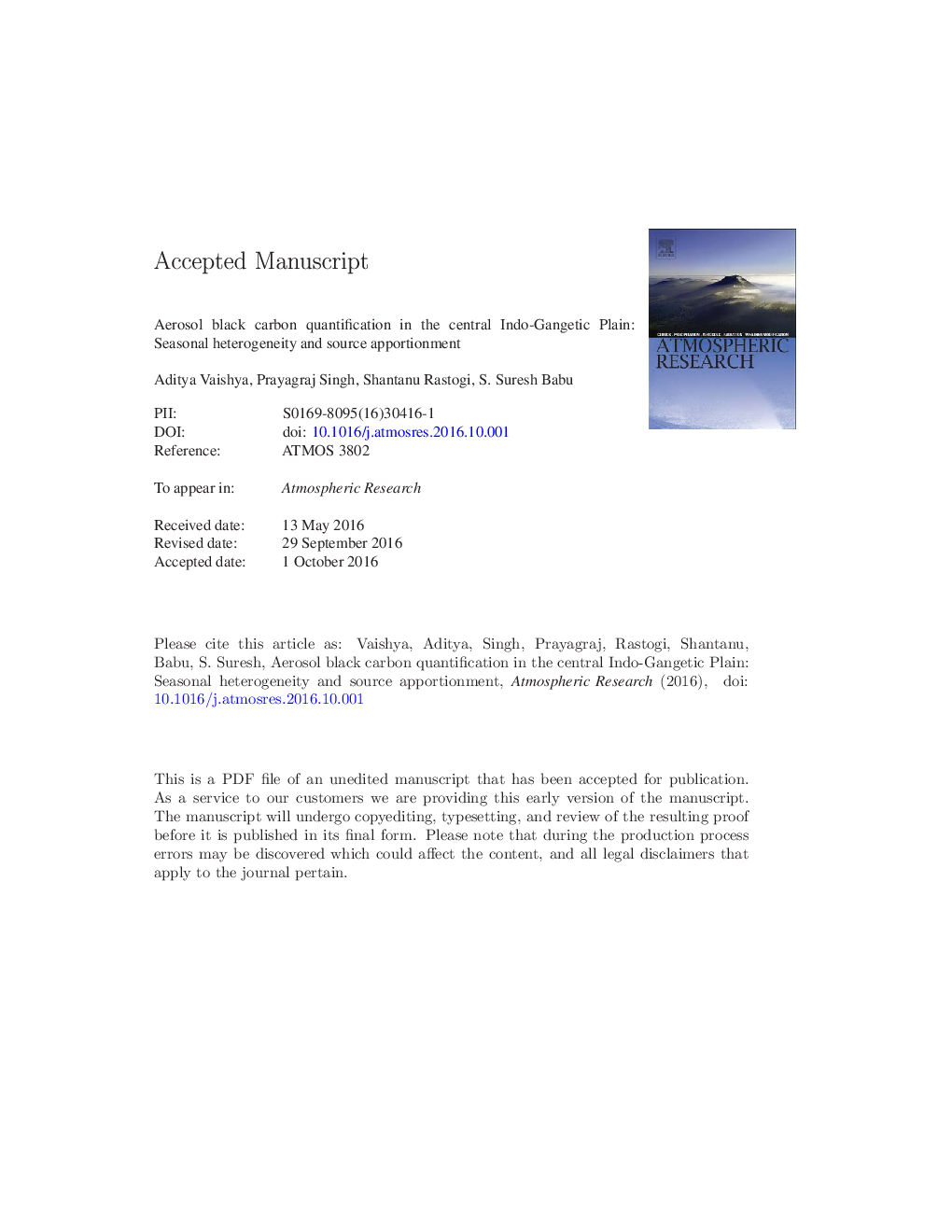| Article ID | Journal | Published Year | Pages | File Type |
|---|---|---|---|---|
| 5753689 | Atmospheric Research | 2017 | 26 Pages |
Abstract
Two years of aerosol spectral light absorption measurements, using filter based technique, from the central Indo-Gangetic plain (IGP), Gorakhpur (26.75°N, 83.38°E, 85 m amsl), are analyzed to study their seasonal behavior and to quantify their magnitude in terms of absorbing aerosols loading and source speciation. Spectral absorption analysis reveals a four-fold enhancement in absorption in winter (W) and post-monsoon (PoM) seasons at UV wavelengths as compared to IR wavelengths on account of increased biomass burning aerosol contribution to total absorbing aerosol load. Aerosols from the biomass sources contribute ~ 28% during W and PoM seasons as against ~ 16% in pre-monsoon (PM) and monsoon (M) seasons to the total absorbing aerosol content. A Mode shift in the distribution of the Absorption Ã
ngström exponent (α) from 1.3 to 1.6 from PM-M seasons to PoM-W seasons signifies change in source type of absorbing aerosols from fossil fuel to biomass burning and their relative source strength. Due to near stagnant wind conditions combined with shallow boundary layer height, where air masses travelling to the central IGP are confined to a smaller volume, in W and PoM seasons, local sources assume more prominence rather than long-range transport of aerosols. Long-term measurements of aerosols physicochemical and radiative properties from this measurement location will enhance our understanding of the complex aerosol system over the IGP and its climatic implications.
Related Topics
Physical Sciences and Engineering
Earth and Planetary Sciences
Atmospheric Science
Authors
Aditya Vaishya, Prayagraj Singh, Shantanu Rastogi, S. Suresh Babu,
